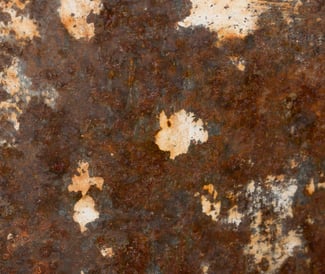
When making custom wire baskets for materials handling, parts washing, or any other application, the choice of material that you use can mean the difference between having a custom basket or rack that lasts for years, and having one that starts to fall apart after just a few uses.
This is why many manufacturers are careful to use specialized metal alloys such as stainless steel for a variety of different applications. However, while laymen are generally familiar with the term stainless steel, many are not familiar with the fact that there are many different types of stainless steel, such as grade 301 SS or grade 304 SS.
What are the differences between these two popular stainless steel alloys? How do they stack up against one another?
Here are a few of the key differences between these two materials to help you choose the right type of steel for your next custom wire rack or basket:
Cost
While both 301 and 304 stainless steel use iron for their main ingredient, the two alloys have a couple of key differences in their chemical composition, which you can see in the table below (numbers indicate percentage of material by weight):
|
Grade |
Carbon |
Manganese |
Phosphorous |
Sulfur |
Silicon |
Chromium |
Nickel |
Nitrogen |
|
301 |
0.15 |
2.00 |
0.045 |
0.030 |
0.75 |
16.00 – 18.00 |
6.00 – 8.00 |
0.10 |
|
304 |
0.08 |
2.00 |
0.045 |
0.030 |
0.75 |
18.00 – 20.00 |
8.00 – 12.00 |
0.10 |
As you can see in the above table, many of the compounds in the two steel alloys are capped at the same values. However, grade 304 stainless steel gets more chromium and nickel than grade 301 does. This tends to make grade 304 stainless more expensive than grade 301 is.
How much more expensive? That depends on the price of chromium and nickel at the time of purchase.
Corrosion Resistance
 Most stainless steel alloys have good or excellent resistance to corrosion in normal conditions. Stainless steel alloys tend to possess a strong, but thin, layer of oxide that prevents rusting, hence the name “stainless” steel.
Most stainless steel alloys have good or excellent resistance to corrosion in normal conditions. Stainless steel alloys tend to possess a strong, but thin, layer of oxide that prevents rusting, hence the name “stainless” steel.
In mildly corrosive environments at normal ambient temperatures, the corrosion resistance of grade 301 and grade 304 stainless isn’t very different. Generally speaking, grade 301 tends to be a little less corrosion resistant than grade 304 because the 301 alloy has a lower chromium content and a higher level of carbon.
At higher temperatures, the difference in corrosion resistance is more pronounced.
For example, if you were to weld or laser-cut a piece of 301 stainless steel, you would be more likely to see signs of corrosion in the heat-affected zones than you would in a piece of 304 alloy treated in the same way. This is because of chromium carbide precipitation, which depletes the chromium in the heat-affected areas.
Get to know the resistance properties of other materials here!
Tensile Strength
Another key difference in these two grade of stainless steel is the amount of pressure that each can take before experiencing mechanical failure.
Grade 301 stainless steel, with its higher carbon content (0.15% compared to 304’s 0.08% by weight), can better withstand mechanical force. In room temperature conditions, grade 301 stainless can take up to 120 ksi (kilopounds per square inch).
Grade 304 stainless steel, by comparison, can only take up to 90 ksi of pressure before experiencing mechanical failure. This means that at room temperature, a basket made of grade 301 stainless steel can take up to 33% more stress than a similar basket made from grade 304 alloy.
Contact a Marlin Steel Engineer to find out which is best for your next project.
Which One is Better?
So, to answer the question you’ve been waiting for, “which alloy is better for my application?”
To be honest, the answer depends on your application.
For applications where the material of your custom container won’t be exposed to high temperatures, saltwater, or other high-corrosion conditions, and you need a higher tensile strength, grade 301 SS is probably going to be the right choice.
However, for applications where the custom wire basket or rack will have to carry a load through high temperatures, or will be exposed to very corrosive conditions, grade 304 SS will usually be the better option for useful life and long-term cost-effectiveness.
Related Articles:
What’s the Difference Between Grade 304 and 304L Stainless Steel?
What is the Difference Between 301 & 304 Stainless Steel?
What is the Temperature Range for 304 Stainless Steel vs. 316 vs. 330?








.gif)


